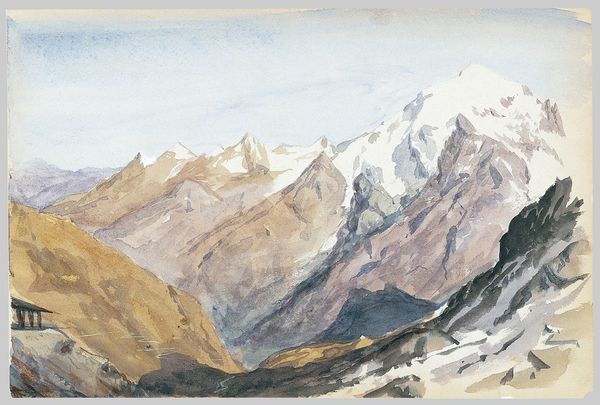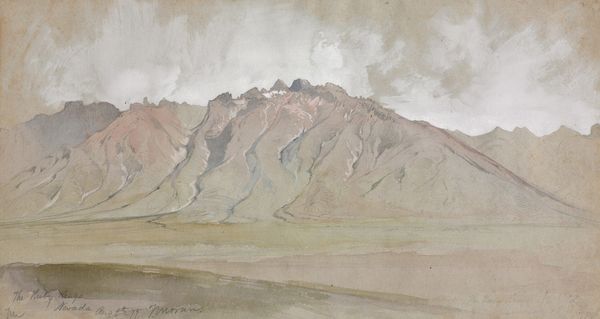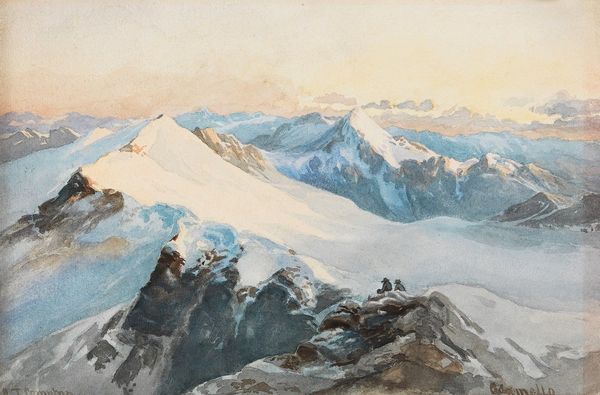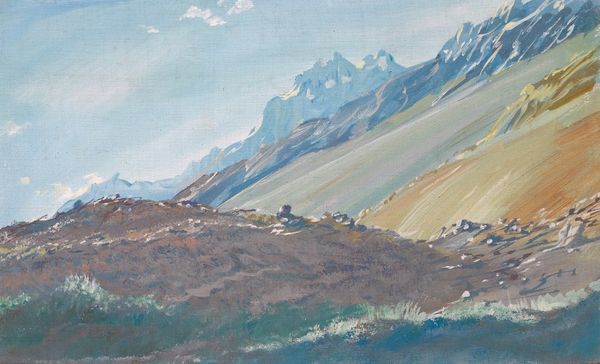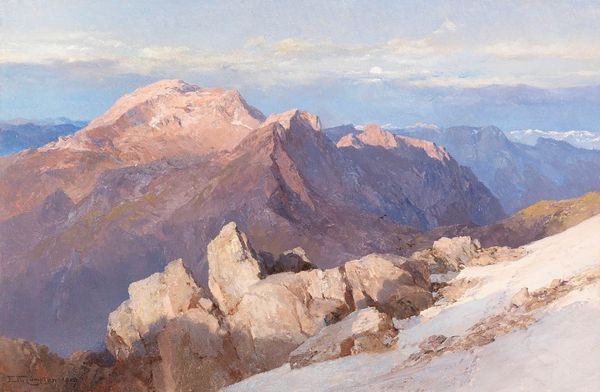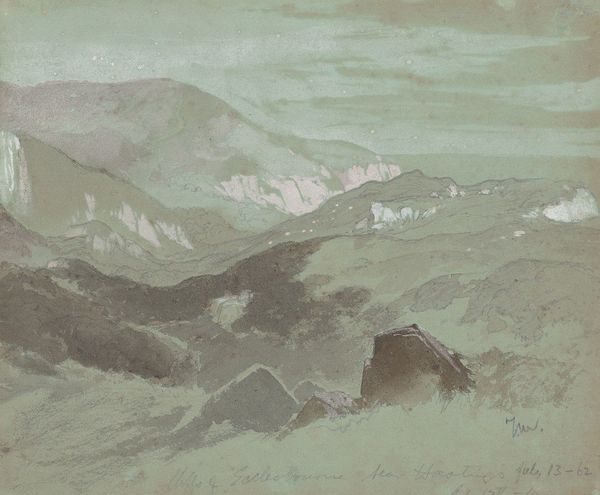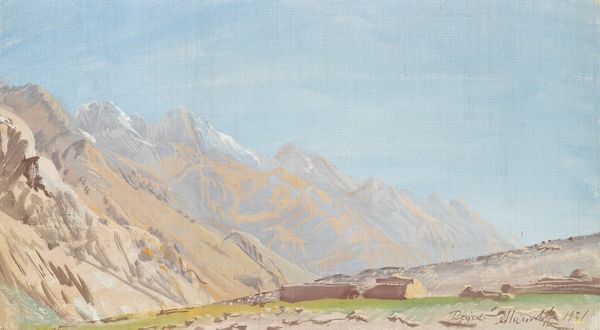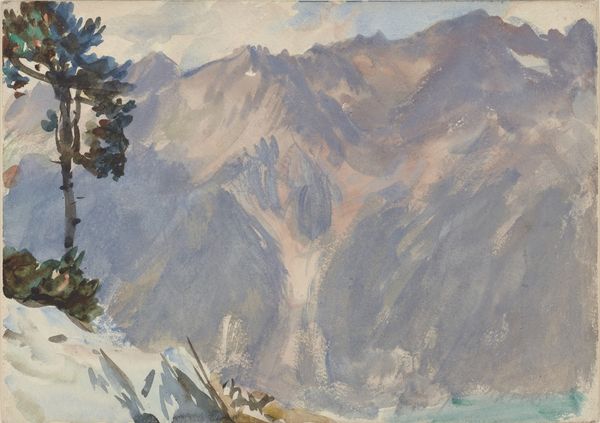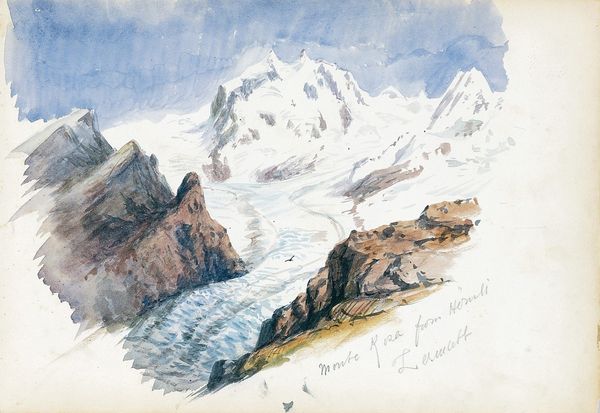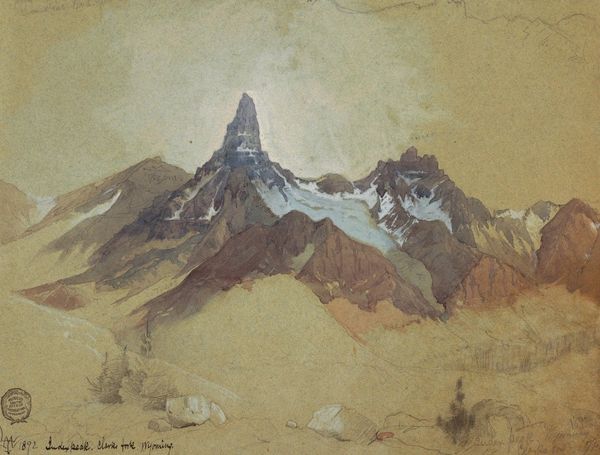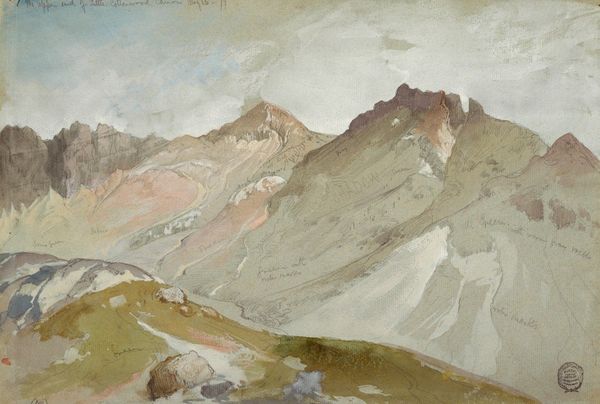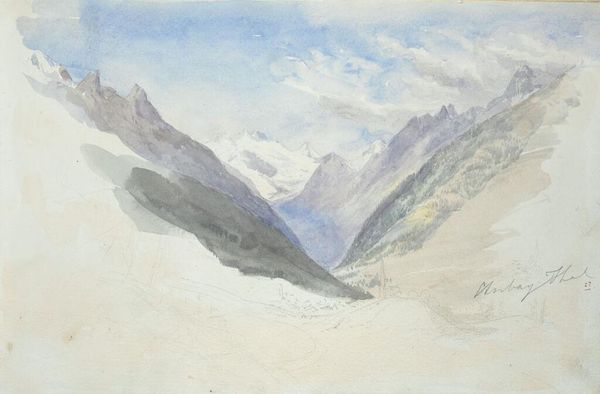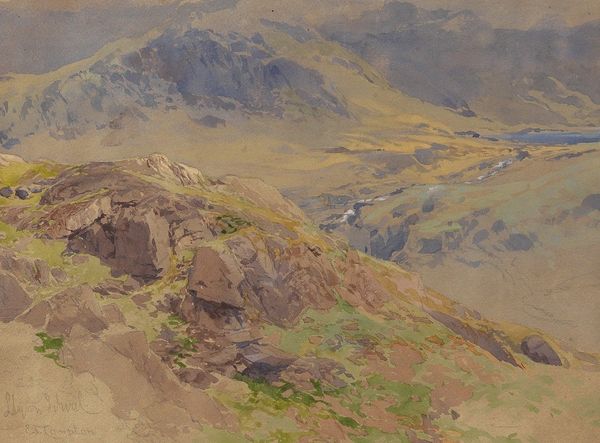
Copyright: Public Domain: Artvee
Curator: Immediately, it strikes me as lonely, isolated, a feeling of intense solitude. The subdued color palette adds to that atmosphere. Editor: Indeed. We're looking at Edward Theodore Compton's 1909 watercolor painting, "Hohe Kammer Kitzsteinhorn." It depicts a monumental mountain peak, part of the Austrian Alps, dominating the composition. Curator: The mountain definitely evokes power and permanence, almost a primordial force, but rendered in such delicate watercolor! It softens that might, almost suggesting a transient beauty. It's as if it might disappear with a strong wind. I am also immediately attracted by the Romantic aspect, that I relate to the human figure standing on a promontory watching the impressive vastness of nature! Editor: Right. It aligns perfectly with the Romantic tradition's emphasis on sublime landscapes. Artists sought to convey the overwhelming power and grandeur of nature. These alpine landscapes spoke to national identity and the rising popularity of mountaineering as recreation. Do you see something beyond aesthetic contemplation? Curator: Definitely. The mountain itself, often depicted with snow, suggests a connection to purification, perhaps spiritual ascent. It represents steadfastness and permanence but could also represent challenge, our personal struggles. Editor: It’s interesting to consider this work was created amidst growing European tensions prior to the First World War. Perhaps, this image speaks to a desire for something timeless, unyielding in the face of social and political upheaval. These alpine landscapes also became central to propaganda and notions of national identity. Curator: Good point. A shared symbol across nations then, as mountains hold symbolic significance in many cultures worldwide as representations of strength. This mountain is the focus of reflection, it's timeless. Editor: So the iconography transcends a particular cultural or political reading in your eyes? Curator: It all exists, I think, working on different registers and at once. It’s a testament to Compton's skills, but also perhaps, a subconscious visual reaction to anxieties. It may seem idyllic but underneath there are hidden tensions. Editor: It’s an insightful point, I am convinced. These images become less objective views and more cultural barometers. Thank you! Curator: Thank you for making me aware of these socio-political relationships in the landscape.
Comments
No comments
Be the first to comment and join the conversation on the ultimate creative platform.
